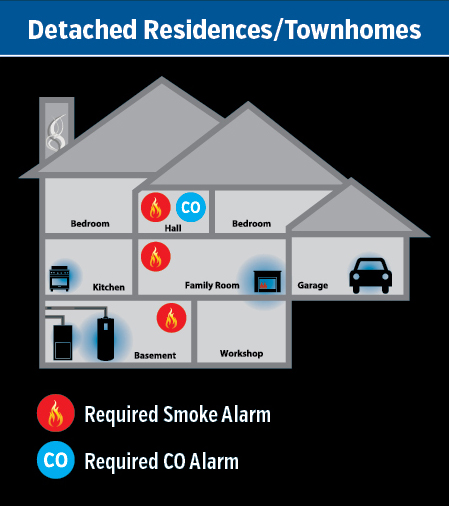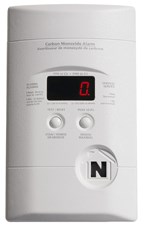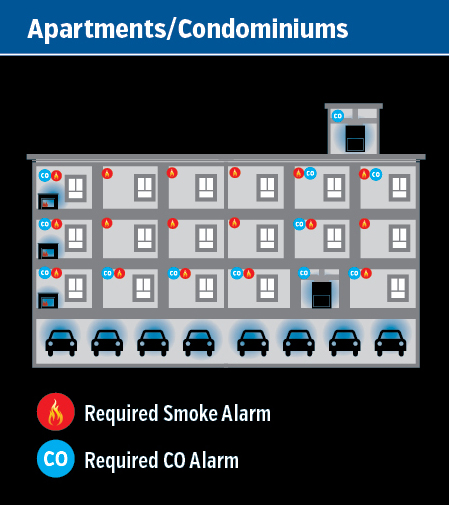
You are required to put CO alarms in each sleeping area in your home when you have fuel-burning appliances, heating systems, fireplaces or an attached garage. If you do not install CO alarms in your home, you could get a ticket or other penalty.
This website uses cookies to enhance usability and provide you with a more personal experience. By using this website, you agree to our use of cookies as explained in our Privacy Policy.
Garbage Collection Moved to December 26

Carbon Monoxide (CO) is a poisonous gas that you cannot hear, see, smell or taste, also known as a “silent killer” made by the incomplete burning of fuels like natural gas, propane, heating oil, kerosene, coal, charcoal or wood due to inadequate air. In spaces like your home, cottage or vehicle, even a small amount of CO is dangerous and can be deadly.

You are required to put CO alarms in each sleeping area in your home when you have fuel-burning appliances, heating systems, fireplaces or an attached garage. If you do not install CO alarms in your home, you could get a ticket or other penalty.
CO alarms in apartment buildings

In all multi-unit residential buildings with attached garages or service rooms, CO alarms are required near each sleeping area in each unit with a common wall, floor or ceiling with the garage or service room. The owner or property manager must install and maintain properly working CO alarms in your building.
Contact Us
Town of Tecumseh
917 Lesperance Road
Tecumseh, ON N8N 1W9
Phone: 519 735 2184
Fax: 519 735 6712
Contact Us
Report An Issue
Sign up to receive News & Notices
Stay up to date on the Town's activities, events, programs and operations by subscribing to our News & Notices email.
Town of Tecumseh
917 Lesperance Road
Tecumseh ON N8N 1W9
Phone: 519 735 2184
Fax: 519 735 6712
Office Hours:
Offices are open from Monday to Friday
8:30 am - 4:30 pm
Be sure to follow us on: